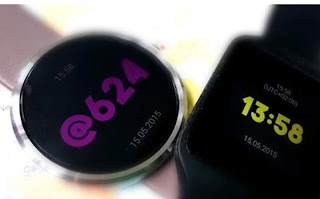In 1999, the Swatch company produced several watch models, named “Swatch .beat”. These watches could show standard time as well as Swatch Internet Time. They even managed to convince some websites to use their new time format. The most famous website among them was CNN.com.
Swatch Internet time (or beat time) is a time measurement system introduced by the Swatch Company in 1998 as part of the promotion of their “.beat” watch series. It divides the day into 1,000 parts, where each part is equal to 1 minute 26.4 seconds. This concept is similar to the minutes of the decimal system used during the French Revolution.
The point is this: Wouldn’t it be great if we could do away with all the complicated international and regional time—so that everyone’s watch in every part of the world showed the same time!
Today, when we are connecting more and more with people in distant lands, having the same time everywhere would have been a great advantage.
For example, if you’re in Dhaka and have an appointment to call someone in New York or Beijing at 2 o’clock, you don’t have to worry about calculating the time there or wondering if they actually mean 2 o’clock.
What if we could eliminate the hassle of hours, minutes, and seconds, along with the semicolons we use to separate them? And, what if we eliminate the AM and PM distinction as well?
A single three-digit number preceded by an “@” sign to indicate a specific time?
Because when you’re standing in line to pick up a pizza, a receipt number like “124” is easy to remember, and seems to work pretty well, right?
That’s basically the idea. In Swatch’s Internet time system, the day is divided into 1,000 “swatch bits”, each bit equaling 1 minute and 26.4 seconds. Each day starts at @0000, which corresponds to 12pm on Swatch’s headquarters in Switzerland.
In 1999, Swatch founder Nicolas Hayek told the New York Times that Internet time was going to be the trend of the future. “The Internet has made people more aware of themselves as citizens of this small world, where we are all essentially equal,” Hayek said. “Internet time is the perfect benchmark for this era.”
The company thought it would sell a $70 watch that would display the local time as well as the “swatch beat”.
But as you can probably guess from the lack of people emailing you to meet @84 or @242, Internet time has never really been popular.
The company still provides a calculator on their website that allows you to convert your local time to swatch beats and vice versa. But that doesn’t work much, because the company no longer sells watches that show Internet time.
But why this idea is not effective?
Why Did We Start Global Time?
Why don’t all the people of the world throw away their current 12-hour clock and go to the new system?
On the one hand, this idea is as crazy as the kind of madness that would start if everyone started speaking Esperanto instead of their mother tongue.
Esperanto is an artificial language created by a 19th-century Polish linguist, combining parts from various European Romance languages. But when we think about the Internet, this idea doesn’t seem so crazy anymore. Because, in the late 2000s, the English language became dominant on the Internet, though not universal.
It’s even less crazy when you hear that in the late 1800s, railroad companies created the concept of the current time zone to cover different areas and forced cities and even entire countries to stop using local solar time and switch to the new system.
Of course, the railroad traders had a strong position. Rail travel would not have been possible for citizens without their new measures. And not being able to travel by rail at that time meant that all trade and commerce stopped.
On the other hand, Swatch (who encouraged people to buy watches by showing the beauty of their watches) did not have the power to force anyone to adopt their new approach. Many derided it as a failed product, comparing it to the ‘Newton’ tablet made before Steve Jobs returned to Apple in the early 1990s.
Critics were quick to point out that Internet time did not solve the critical problem of hindering international communication.
Even if everyone on Earth were to use the same artificial time standard, their body clocks or circadian clocks (internal clocks in the plant-to-animal world that keep pace with the Earth’s circadian rhythms, linked to their hormone secretions) would be different.
Physicist Judah Levin told the New York Times that when it’s @430 in cyberspace on Internet time, New Yorkers may be awake, but those living in Beijing will still be asleep. In his words, “Swatches still have the same problem that the Earth revolves around the Sun. The Internet can’t change that.”
Swatch really couldn’t. If you’re still interested in internet time, you can find older ‘net-surfers’ or other models on eBay that show the Swatch Beat. But when you tell someone, you’re on a conference call @637, it’s not fair to expect that person to understand what you’re saying.



